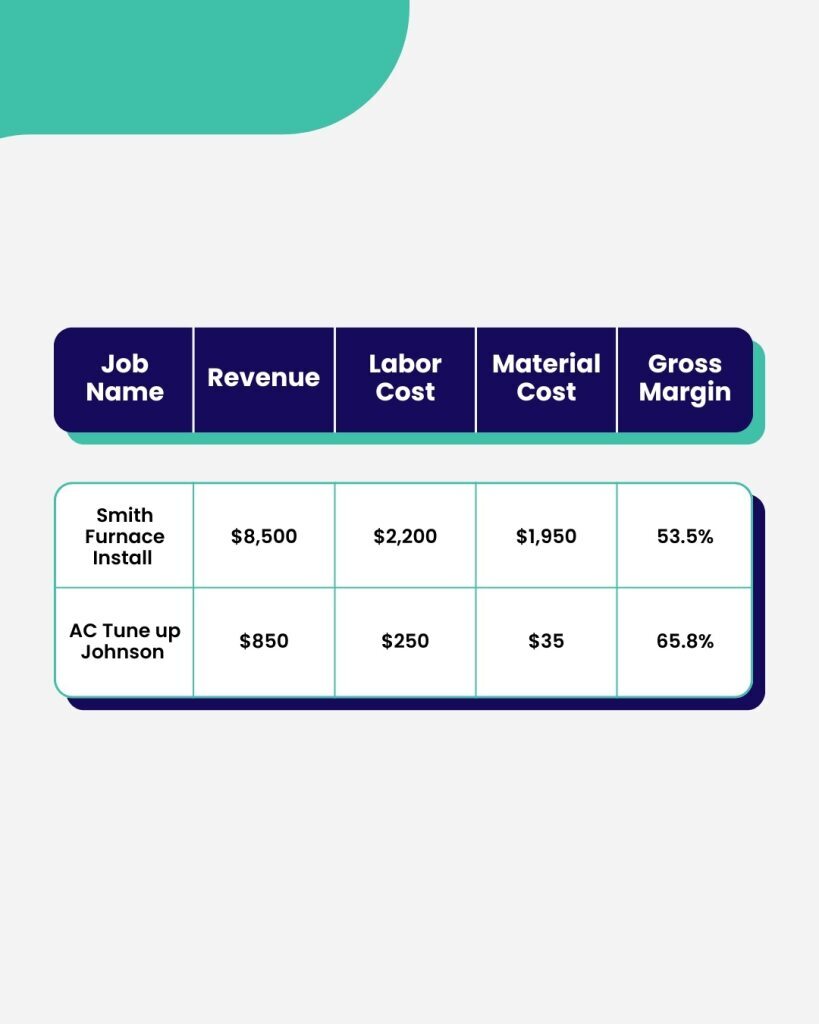.png)
You install systems. You handle emergency calls. You keep buildings running.
But are your jobs actually making you money?
If you’re not accurately tracking job-level revenue and expenses, your HVAC business might be busy, but not profitable. And if you're reading this, there's a good chance you want to tighten that up.
Let's walk through how proper HVAC job costing and accurate bookkeeping practices help HVAC companies run smarter, grow faster, and stop losing money without realizing it.
Job costing = knowing exactly what you earned and spent on a job.
Sounds simple. But most HVAC businesses lump everything into broad buckets like “labor,” “materials,” or “overhead.” That’s where the problem starts.
Because if you don’t break down each job...
Job costing brings clarity. And clarity brings better decisions.
Many HVAC businesses incorrectly label all labor as "overhead." Labor hours spent directly on a job should be tracked as Cost of Goods Sold (COGS).
Use time tracking software or clear manual logs to track:
Pro Tip: Don't overlook unapplied time, travel, waiting, idle hours. This often becomes a significant hidden cost affecting your HVAC’s profits.
Your vans are moving warehouses. If you're not logging part usage per job, you're either under-billing or eating the cost.
Track every:
Using inventory systems integrated with job tickets helps simplify bookkeeping.
Expenses like permits, rentals, or subcontractor payments should be tied directly to the job in your accounting system, so they're not lost in general overhead.
HVAC companies benefit from accrual accounting, which tracks revenue when earned, not just when payments arrive.
Directly match invoices and costs to each job to keep your financial records clear.
After completing installations, your accounting system should detail:

If your estimates include labor, parts, warranty, and commissions but these don’t appear similarly in your financial reports, something’s off.
Ensure commissions and warranties are accurately tracked as COGS to avoid absorbing these costs into your profit margins.
Most Common Mistakes HVAC Businesses Make (We See These All the Time)
These issues significantly affect profitability and cash flow.
Many HVAC business owners rarely look beyond basic Profit & Loss (P&L) statements. Instead, do the following:
Regularly checking job profitability helps you make smarter business decisions when pricing new jobs or expanding services.
You don’t need complex software, just a clear, reliable system for tracking costs, comparing margins, and making timely adjustments.
We've helped HVAC businesses organize their numbers clearly to simple systems showing:
Schedule a free call today, and we'll help you simplify your bookkeeping, spot areas for improvement, and keep your HVAC business profitable.
You’ve got the jobs. You’ve got the team. Now get the financial clarity to grow with confidence.
We’ll show you where your money’s going — and help you keep more of it.
